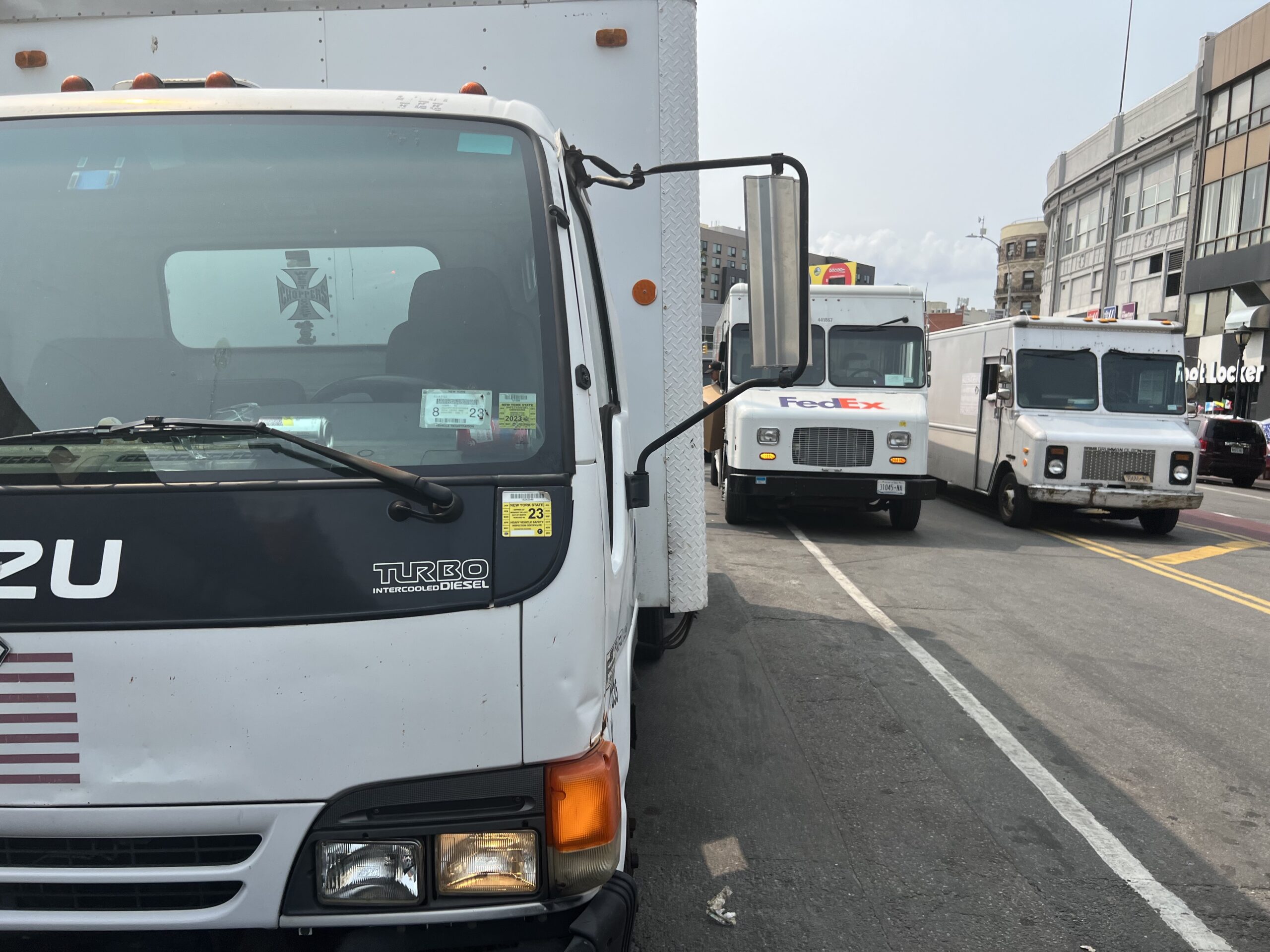Logistics is a booming industry in the South Bronx, and many e-commerce companies are choosing Hunts Point as the site of new warehouses for last-mile deliveries. But the increase in logistics facilities is also causing an increase in traffic congestion and the air pollution that comes with it.
The latest addition to the neighborhood is the Bronx Logistics Center, a colossal four-story facility with a total capacity of 1.2 million square feet at East 149th Street along the waterfront. It was originally projected for delivery this summer, and is now in the final stages of construction, according to the facility’s website.
The influx of last-mile delivery sites raises difficult questions for a neighborhood already dubbed “asthma alley” due to high levels of respiratory illnesses that result from high volumes of local traffic. Several environmental and business organizations have suggested remedies, but long-term solutions remain out of reach.
Last-mile facilities generate more trips than other warehouses, due to the time pressures of same-day delivery. Many e-commerce companies try to reduce delivery times by placing warehouses along major highways and traffic routes, resulting in clusters of high-traffic warehouses in industrially-zoned communities like Hunts Point.
One way to reduce the health impacts is to reform zoning laws to prevent warehouses from becoming concentrated in the same neighborhoods, said Kevin Garcia, Transportation Planner for the New York City Environmental Justice Alliance.
The Alliance is one of several environmental organizations pushing for a zoning text amendment to restrict the number of warehouses that could be located in neighborhoods that already have facilities. Under the amendment, companies looking to open new last-mile warehouses would have to seek a special permit from the City Planning Commission.
In addition, new last-mile warehouses would be prohibited from opening within less than a thousand feet from other such facilities, or from schools or parks.
But getting the zoning amendment adopted will be a challenge, Garcia acknowledged. These amendments must pass through the City Planning Commission, which has no deadline to review proposals.
“There’s really no timeline,” Garcia acknowledged. “That’s why we need as much public support for this application as possible.”
Electric vehicles hold some promise as a solution, but they face a chicken-and-egg problem: EVs are unlikely to gain traction until charging infrastructure is more readily available. Yet for charging infrastructure to flourish, there needs to be far more electric vehicles on the road. As it is, there are only a handful of charging stations in the Bronx, according to a map produced by the Department of Energy, and none in Hunts Point.
“A lot of drivers in Hunts Point have EVs, but don’t have a place to charge them,” said Erik Foreman, co-founder of the Driver’s Coop. “There are vast deserts where you don’t have a place to charge.”
The Driver’s Coop is a ridesharing company similar to Uber, but owned by its 9,000 drivers. They are hoping to expand and create a separate cooperative for electric trucking, Foreman added.
The benefits are not just environmental. Electric vehicles have fewer moving parts, which can mean lower maintenance costs in the long run. They also have less vibration, a significant health factor for long-term truckers.
“It’s really about getting buy-in from, the owners, operators, and leasers,” said Donald Eversley, Executive Director of the Greater Hunts Point Economic Development Corporation (GHPEDC). “Not only are these vehicles better for your surrounding community, they’re more healthy for your workers.”
The GHPEDC is one of several organizations backing the Bronx Is Breathing, a plan created by environmental advocates and businesses to facilitate electric truck fleets, along with the creation of charging stations.
Part of that plan includes establishing a public charging hub for electric trucks at an environmental site at the southern tip of the Hunts Point peninsula. The proposed charging station, which has received partial funding from New York’s energy development authority, would be able to provide public charging for dozens of vehicles at once.
But electric vehicles cannot solve the problem alone, especially if congestion is not reduced and the majority of truck fleets continue to run on gas or diesel.
“Even if you’re driving a zero emission truck, the truck behind you isn’t going to be zero emission,” said Paul Lipson, founder of the consulting firm Barretto Bay Strategies, which is also backing the Bronx Is Breathing plan. “So even if you put 20 new electric trucks on the street, that’s slowing down all the old diesels, that are going to be polluting more, because they’re going to be idling more.”
In addition to electric trucks, Lipson suggested alternative vehicles—trikes, e-bikes, even ships—to reduce the need for heavy trucking.
The only certainty is that there are no quick fixes.
“Internal combustion engines and horses, coexisted for 30 or 40 years before horse-drawn vehicles faded out,” Eversley added. “So we know it’s not going to happen overnight.”

